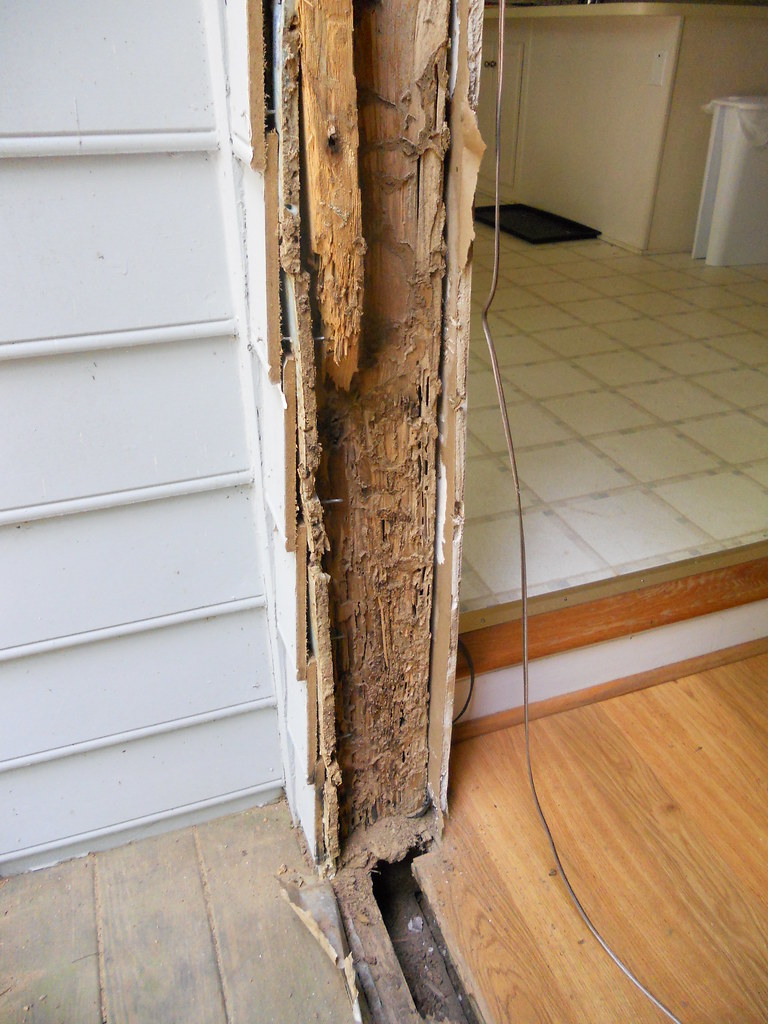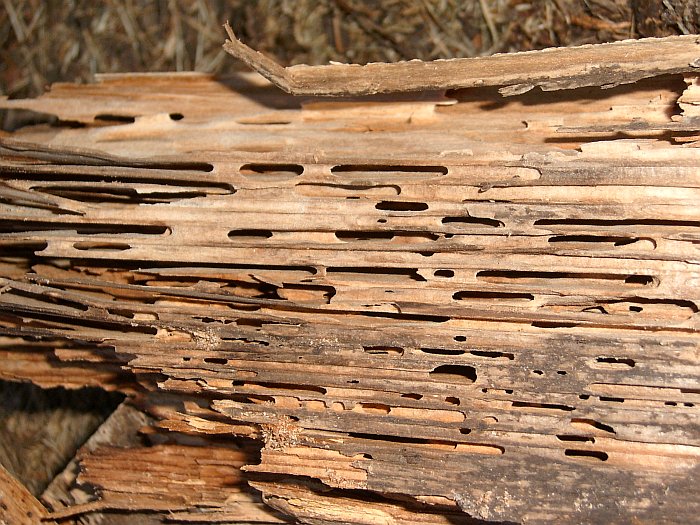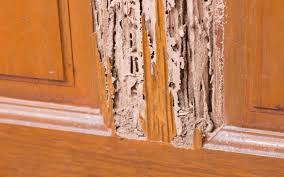We are no stranger to termites in north Georgia. Like in the rest of the southeastern United States, here they can remain undetected for long periods of time. This allows them to do serious damage without being discovered. If you have termites in your home, it is likely that you will first be made aware of their presence due to:
- The sudden appearance of winged termites emerging from a structure, otherwise known as a swarm, and/or
- Discovering termite infested wood or wood products, and/or
- The presence of termite shelter tubes on or within buildings or other structural elements, especially wood.
You may be wondering, what exactly does termite infested wood look like? Here are some photographs to illustrate what you and your pest management professional are looking for when searching for termite damage.

Structural wood, especially wall studs, door and window frames, and headers, joists, and sills may be infested with live termites or show damage from prior feeding. It is common to find damaged, but abandoned (no live termites), wood where termites had once fed, but are no longer feeding.

Subterranean termites cause damage to wood through their eating habits. They feed along the wood grain, consuming the soft, spring growth. Subterranean termites will also consume or damage non-structural, cosmetic building materials, including molding, paneling, drywall paper, some types of carpet, wood flooring, linoleum, wood baseboards, etc.

When inspecting damaged wood, finding soil typically indicates the presence or past presence of subterranean termites. The presence of soil indicates subterranean termites rather than other wood-destroying insects because others, such as carpenter ants, wood-infesting beetles, and drywood termites, do not transport soil into excavated wood. Subterranean termites engage in the transporting of soil to keep the wood and their passages moist – a necessary condition for their survival. They also use soil to the same end in their shelter tubes that may be used to connect additional feeding sites within and between wooden structural members.

If you suspect that you have a termite infestation in your home or on your property, you should call your pest management professional right away and ask them to come take a look. If you do have a termite infestation, you want to get rid of them as soon as possible in order to prevent serious damage to your home.
If you think you have a problem with termites. . . or any other pest. . . or simply have a question. . . call Faith Pest Control at 770-823-9202. We’ll be happy to speak with you any time.
Here’s to helping YOU live PEST FREE,
Erica
P.S. And be sure to ask about our FREE 58 Point Pest Analysis of your home or office!
